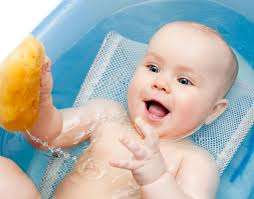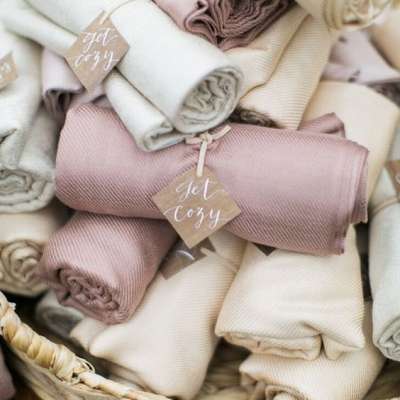Baby Basics: Sponge Bathing

Bathing your baby for the first time can be intimidating if you've never done it before, but the process is actually not as complicated as it might seem at first; all it needs is a bit of careful handling and early preparation, and you're set to enjoy some quality mommy-baby bonding time!
Sponge Bath or Tub?
A general rule of thumb: if your baby's umbilical cord has yet to fall off or his circumcision wound is still unhealed, then you should use a sponge bath only. Once the umbilical cord is detached and your baby's circumcision is healed, you can begin administering regular baths in a tub.
Frequency
Two to three sponge baths a week should be sufficient to keep your newborn clean, since they aren't old enough to crawl around and thoroughly get dirty yet. Aside from the sponge baths, you will need to carry out a bit of "spot cleaning" as needed, cleaning the diaper area after changing, and the mouth, neck and chest areas after feeding.
Time of Day
There is no rule on what time of day you should give your newborn its bath, but most mothers feel that administering it in the evening before a baby's nap helps soothe and prepare the baby for sleep. It's generally a good idea to avoid giving baths before meals as well, as your baby will most likely be spitting up and dirtying itself all over again right after. Set aside time for the bath so that you don't feel rushed or get distracted from your baby.
What You Need
Make sure you have the following supplies in easy reach before undressing your baby:
Two washcloths, or one if you will use your hand for soapingSterile cotton balls for cleaning the eyesMild baby soap (try to avoid scented soaps, which tend to contain chemicals that can irritate the baby's sensitive skin)Mild, no-tears shampoo (to be used only once or twice a week)Warm water if you are not within reach of the sinkRubbing alcohol and cotton swabs or alcohol pads for cleaning the umbilical cord area until the cord has fallen offTowel, preferably with a hoodA clean diaper and clean clothingOintment or cream for diaper rash if needed
The Bath Site
Good locations for a sponge bath include the changing table, a kitchen counter or your bed. Cover your bed with a waterproof pad or the counter with a thick towel or pad. Your work surface level should make it easy for you to move around and give you plenty of room to place the bath items around you. Turn off any fans or air conditions in the room until you're done with the bath. Ideally, the room should be draft-free and at a temperature of around 23C to 26C.
The Sponge Bath
Never, ever, ever take your eyes or hands off your baby once you start the bath; anything could happen within a split second, even if your baby isn't half submerged in a tub. Also, never use a cotton swab to clean your baby's nose and ears, as it can damage tissues. Follow these general guidelines and then you can begin the bath:
Getting Your Baby Ready – If the room is warm, you can undress your baby completely and keep it loosely covered with a towel. However, if it's cool then only undress the part that you will be washing at each given time before patting it dry and covering it once again. It's best to keep the diaper on until you want to clean that area, since you can never predict when the baby will want to urinate or poop.Wash Cleanest Areas First – Work your way from the cleanest to the dirtiest part of the body to keep the washcloth and water clean. Soap your baby either with your hand or cloth, but be sure to use a separate washcloth for rinsing.Head – Shampoo your baby's head only once or twice a week and make sure you rinse very thoroughly. When not using a shampoo use water. Never rub the baby's head dry; instead, gently pat it dry.Face – Clean your baby's eyes using a separate cotton ball moistened in warm water for each eye, wiping gently from the nose outward, and then dry. Do not use soap for the face.Neck and Chest – Unless your baby is particularly dirty, you needn't use soap to wash the neck and chest. Make sure to wash under all folds and clean out all creases, as dirt tends to accumulate. Pat dry.Arms and Legs – You will need to extend the arms to get into the elbow creases. Use some soap to clean the hands, but make sure you rinse it off thoroughly. Also extend the legs to get the backs of the knees.Back – Place your baby on its stomach with its head to one side and wash the back. Since this area isn't dirty, you won't need soap. Follow by drying.Diaper Area – Wash your baby's bottom and private parts gently and thoroughly with your hand, making sure not to scrub in order to avoid injuring the sensitive skin. Wash out the creases and crevices with soap and water. Dry the diaper area well and use diaper rash ointment if needed.
Source: www.finebabyworld.com





